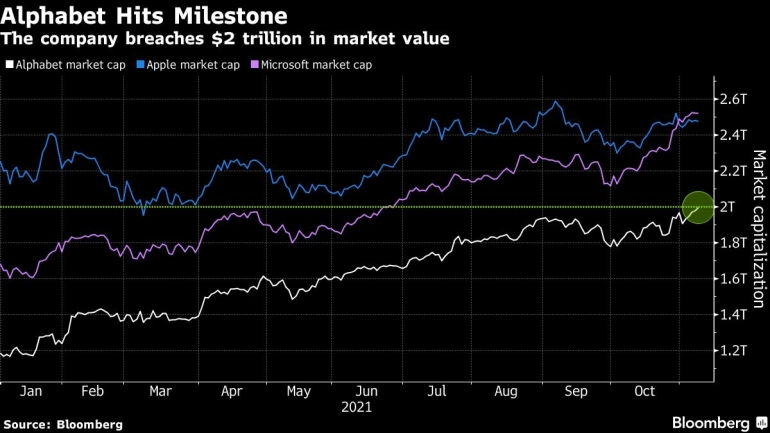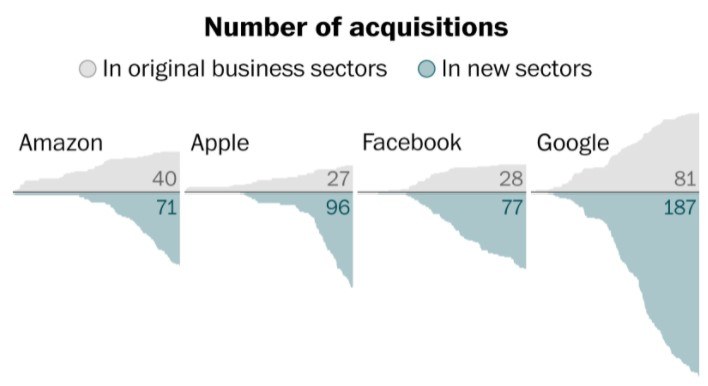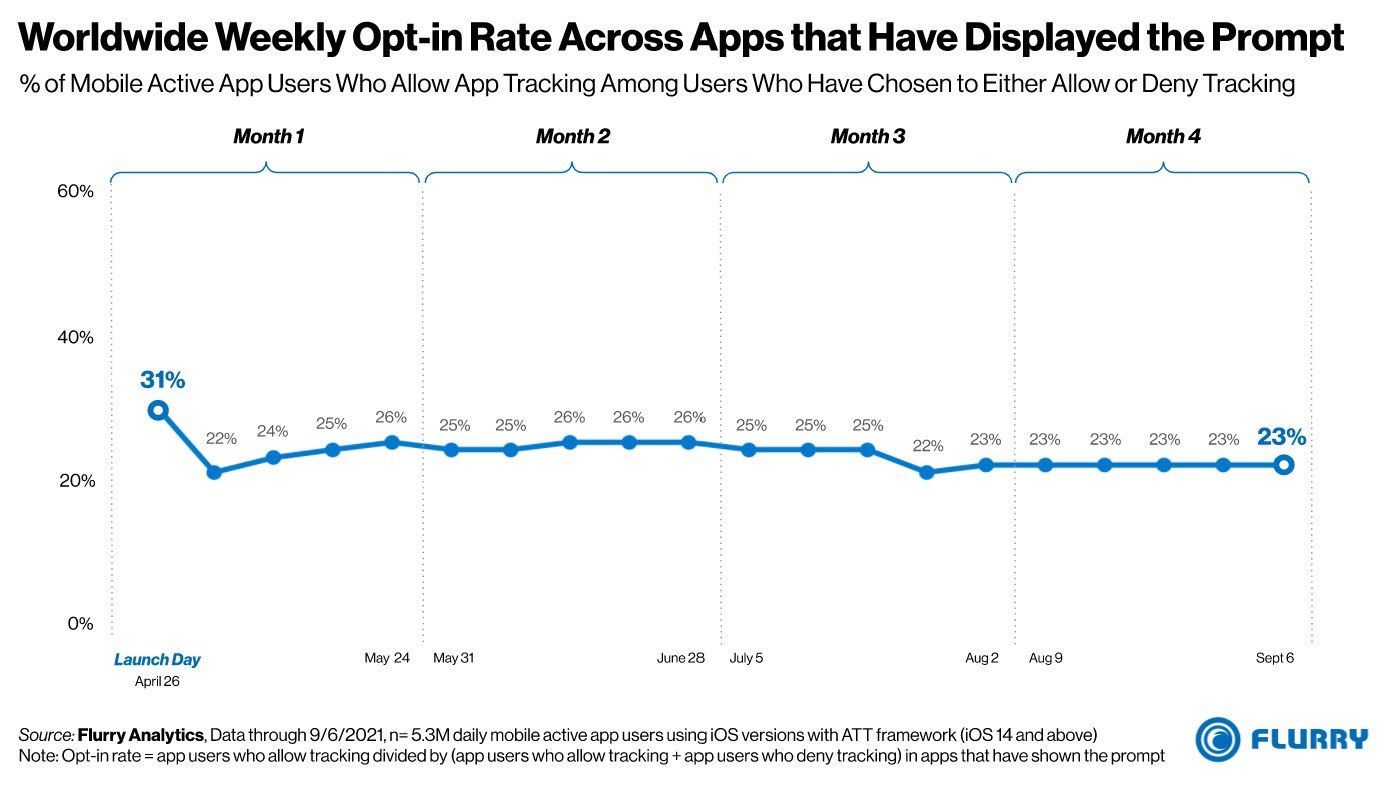Is it really that time of the year already? Another 12 months gone in what sometimes feels like the blink of an eye, and others feels like many years of varying lows and highs squashed together. But here we are again. Time to look forward into what the next 12 months could look like for anyone involved in digital marketing.
To be honest with you dear reader, making predictions about the coming year, after nearly many years of making them (going back to 2013 in this video) increasingly feels mildly futile. Watching back on that video, I’ve noticed that back then my estimates on pace of change were WAY off. And now, as we head into 2022, I expect less and less to change.
Sure, this year has seen media stuffed full of articles on web3 (see crypto & blockchain in new words), the metaverse (well, ok, I did write about that) and other social media channels. It all feels a little bit like a few years ago when EVERYONE IN THE WORLD needed to worry about voice search and how it was going to change the world. Well, if you read the marketing press, that’s how it felt. The reality, as we know, has been very different.
For nearly every client we work with, we’ve spoken to on pitches and seen at most talks, very little has changed for most businesses.
In fact, I’d say things are perhaps getting MORE staid than ever before. Google is still by far and away the biggest driver of traffic. Facebook (paid) still works well for many clients and most clients still have very little accurate data to work their businesses (I’ve been talking about this for years, but it doesn’t really get much better)
I know that I’m sounding a little bah humbug here. There is a huge amount of possibility for these new pieces of technology to change lives and business, perhaps for the better, in the years to come. Yet, it all feels a very long way off, and ultimately futile in terms of any REAL change happening to the market.
The pandemic, and many years before, has seen the price of the biggest tech companies in the world grow, grow and grow again - and to incredible heights. The market cap of the biggest three, Microsoft (remember them?), Apple and Google (Alphabet) have all added between 50-100% extra in value this year alone, totalling over two trillion dollars. In one year. Let me say that again… TWO TRILLION DOLLARS.

When you have just three companies (and I've excluded Amazon and Facebook, sorry Meta), already some of the biggest in the world, adding that sort of value in 12 months... it doesn’t look that great for the rest of the ‘competition’. And even if other companies do get ‘big’ or interesting, then more often than not they will get hoovered up by the giant tech piggy banks to stop them threatening before they make any sort of dent.

So, where does this leave us? If 2022 looks to be the same as any other in the last five or so years in terms of our genuine digital marketing opportunities being limited to a handful of companies, how should we shape our plans and budgets in 2022? Should we really be thinking or doing anything differently?
Below outlines a few thoughts that might be useful to perhaps change your thoughts for 2022 or maybe even longer term if you can handle thinking that far ahead!
Out of (our) control
A phrase that’s not a great one to hear and been overused, but sadly true in the world of digital marketing.
Google particularly, has taken back (or over) more control over how ads get served and where in the last few years and in 2022, I expect things to get worse.
Smart Shopping, Dynamic Search Ads, removal of ‘unnecessary’ keyword data… all of these ‘features’ have been introduced over time to help ‘save us time and effort’, which in some cases they have. However, as time goes on, Google will take away more and more tools and data from us and leave the control of our campaigns out of our hands, and more in Google's.
The big problem I have with this is that Google own the search engine, it owns the Ads platform, and now presses more and more of its own buttons on our behalf. Who is to say whether what they are telling us is true or correct? How do we ‘fix’ things if campaigns start to underperform? What data or insights can we share with our clients about what worked?
We’re starting to live in a world where we let the machine do the job, partly because we have no choice and partly because they have way more data available than they can ever give us, to work to their own advantage and cut us out of the loop. The result is we just have to guide and teach the machine, rather than do it ourselves. We’ve often likened it to flying a plane. In the past, pilots could press and control every dial. Nowadays, it’s about overseeing the autopilot and giving the directions to the right place, and correcting course where necessary. The difference there though is that the plane company doesn't make the plane, control the sky and people it in.
The challenge is appreciating that this approach isn’t really a choice now, it’s just the way to do things going forward. We have some controls currently, but in 2022, it’s likely that these will be reduced even further. It’s in Google's (and Facebook's) interest to have more control so as marketers we’re just going to have to accept it as, to be frank, we don’t have (m)any options or alternatives.
Walled gardens get bigger
In late 2020, Apple announced a number of changes to its OS - all designed to ‘improve your privacy’. Whilst this is partly true, it was also an attack on its competitors like Facebook (and many others) who have been collecting too much data for too long but also pose a threat financially to them.
As of recently, the number of users who’ve been opting out of tracking on Apple's devices, has been largely flat since launch in May, but still enough to put BIG dents into the pockets of its main competitors. By last count back in September 2021, around 23% of users who’d been offered the Allow/Deny option, clicked "allow to be tracked by ads." So that's roughly 4 out of 5 who DON’T want to be tracked!

Despite recent changes in the last week, where Apple has relaxed its rules about allowing more data to be collected by other apps, the fact is that privacy is a big selling point for them. Not only in terms of creating more distance between them and the rest of the market, but also as an opportunity for themselves. While other apps on iOS struggled during 2021, Apple benefited very nicely thank you very much.
Whilst the actual numbers are still early, it looks like Apple's ad business will top $5 billion this year, potentially rising to $20 billion in a few years time. Like Google, when you build your walls high, you can control the real estate and journey of hundreds of millions of people a day. The result is billions in profit for them. Less control for us.
And in the tech wars we see now and into next year, it's going to just carry on with more issues coming from tracking across platforms, as each inch more control back to their own areas for their own benefit. The losers? Most marketers trying to make their digital efforts more effective.
Tiktok and Snap
Despite my assertions about the big five all building their walls bigger, when things get too high, opportunities to build elsewhere present themselves. Tiktok particularly has had a stellar two years, growing hugely in this time, running many TV & ad campaigns and generally being much more in the general psyche of the country. And with this growth, there are good opportunities to reach large audiences and at a much cheaper price than you would perhaps pay on Instagram, Facebook or other social/media networks. And if you don't believe the hype about Tiktok, then perhaps this stat will change your mind (it did for me!)

As much as I've poo poo'd Snap(chat) in the past, it hasn't gone away (albeit, it's not gone mainstream either - I was right ;-) and should be on your watch list in 2022. It got overtaken by Tiktok earlier this year in terms of users on the platform and hasn't been able to keep pace with its newest rival, with it's general positioning as a 'younger' place to hangout, meaning it's reach isn't as great.
But regardless, both offer good opportunities to tap into new audiences or reach existing ones in new ways. Comparing these video & visual based networks to what I'll call 'traditional' routes of say search isn't ever really fair. It's a bit apples and oranges.
With that said, generally cost per action (which could be liking a video, merely showing it or getting a click to your website) are coming in anything from $0.20 to $2 depending on a variety of factors. With more time spent on these platforms and more campaigns from them to reach newer older audiences (maybe I might join properly?), expect it to be a place where more businesses dip their toes in the water when the walls are too high in the other playgrounds.
The web3 bit
My guess is that a good chunk of you still reading (well done & thanks!) might have heard of web3, but have no idea what it means.
To some, it presents a seismic shift in the internet, a chance to liberate individuals and the planet from corporations, to forge new ways of doing things where all of us have control and say, and to fix some of the entrenched issues with how the internet has ended up after 25 or so years. To others, it's a massive ponzi scheme, enabling charlatans to pump and dump all sorts of new tech (or rebrand recent bits) in the name of 'societal progress'.
As with everything in life, the truth lies somewhere in the middle.
If you want a simple overview, this one from Moralis is pretty decent.

My take on web3 is this - it's a way of using 'new' technologies (such as blockchain, AR, mobile) to deliver services that are ultimately distributed across the internet / globe. Rather than a handful of companies having all of the power, this power is shared across platforms that enable anyone to render a scene in a movie (by lending out their spare computer power), create art that is sold to anyone but fully audited and traceable (see NFT current use case) or building virtual worlds for everyone to explore and enjoy.
I wrote about Meta & the Metaverse last month, which outlined where the Zuck is planning to go in the coming decade, and whilst it's part of the web3 movement, it's not all of it. For many, the idea of 'escaping' to a virtual world to chat to other people as cartoon characters with no legs, fills them (me) with utter dread and despair.
I expect the hype bandwagon to pick up speed into 2022, especially if the predicted market crash/recession I hear more about happens. When things get bad, inevitably we look toward new things to fix old problems, and I'm pretty sure we're going to see a huge amount of hype ('LOOK AT THIS THING THAT NIKE DID THAT IS COOL BUT BEARS NO RESEMBLANCE TO REAL BUSINESS!') about AR, VR, blockchain and everything else as we've had in the recent years under this new guise.
As for what it means for me and you in 2022, probably not much. Just watch and wait.
Privacy, cookies & creativity
The debate about privacy online has continued to be a rather dry and drawn out one. The tremendous hoo-hah back in 2018 about GDPR ultimately turned out to be a giant wet firework. Browse the web today and you'll still be refused access to websites if you don't accept cookies, still be tracked by default and perhaps still be tracked, even if you say no! The frankly pathetic implementation of the rules from government means that while we need to keep an eye on how we collect and handle data online, for most, very little has changed at all.
In case you didn't know, in the UK as of December 2021, there have been a grand total of SEVEN GPDR fines recorded. SEVEN! The approach of going after the big boys only, really sends a message that if you're big, you should be worried, otherwise you probably won't be questioned. And the result is a massive meh to the rules and ultimately an erosion in trust with those in charge.
So if the authorities won't protect our privacy, who will? I mentioned earlier about the benefits that come for big tech to be the shining knights in this mess. This role is one they are happy to play, and the result means more pain for us as advertisers.
To get to the audiences we want, we have to play in the walled gardens, which increasingly are keeping data back for themselves as mentioned. The net result? Less data and insight to act on.
The solution? Better creative.
When we held our Attention! conference in 2019, we had Callum from Born Social presenting on how to get the best from the Facebook algorithms. Even back then the message was 'focus on better creative' and in 2022, this message is one we all need to realise and act on. Anything 'black box' whether it's Facebook, Instagram or even Google (who will soon be adding images into the paid search results) the best results then, now and next year, is to improve the creative assets you show your audience. This could be images but also better video. And by 'better' I don't just mean higher quality. Often that will be the case, but it could just be 'better' for your audience in that it connects better with them. It could make them smile, laugh, angry or just more likely to take action. It could look highly polished or rough and ready. Ultimately, you need to test and test again and invest more into this area to get the best from your budget. Relying on just changing audience bidding or careful bid management isn't probably going to give you the edge over your competitors. In some markets it might, but in competitive ones it probably won't.
And this just doesn't apply to your ads, think about getting more creative on your landing page too. We've run many campaigns and tests over the years to test landing pages, and sometimes hit digital gold with surprising CRO winners which have produced great, if sometimes unexpected positive results.
Whatever you can do to test more and new creative in 2022, will likely bring results. Get to it!
Final thoughts
Hopefully some of these (random) thoughts will help guide your digital marketing plans in 2022. I can't say for certain that they will happen and to be frank, they aren't as 'out there' as they have been in previous years. The reality as far as I see it, and the world around me (when I can actually leave my home) is that our mobile phones are still front and centre.
- Google is still the way to find stuff.
- FB/Insta + some others are the way we connect and discover.
- Apple devices still rule supreme.
These things, despite them being around for a long while, and draining MASSIVE amounts of money, data, innovation and taxes out of almost every country in the world, still dominate.
It's sad and not very inspiring, but it's reality.
So in 2022, keep these things close but look at new channels. Tiktok, if done right, can change your business (check out this amazing case study from the Black Country Museum!) Better creative execution can open up new opportunities in existing channels. And, whilst data will get harder to collect and measure, getting it right can really make a big difference.
Whatever happens, I hope you stay healthy and safe and if you need any advice, you know where I am!




